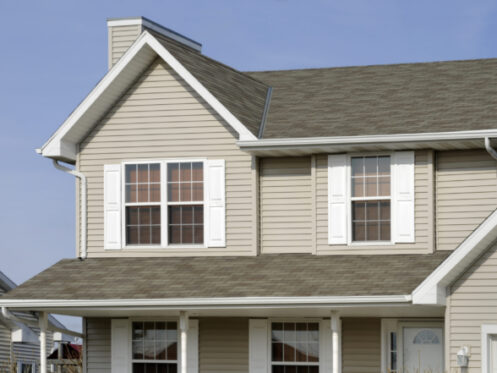A home’s roof is one of its most important components, and it needs to be maintained adequately throughout its useful life. One of the easiest ways to keep tabs on a roof’s condition is to inspect it on a regular basis. Let’s take a look at a few good reasons to initiate a roof inspection and why this is the case.
1. You’re Moving
If you are planning to sell your home as part of a move, you’ll want to have the roof inspected before you put it on the market. A thorough inspection can detect issues such as a leak, dry rot or other problems that could potentially derail a sale if they are discovered by the prospective buyer.
In some cases, you might be able to complete the sale of your home without fixing some or any of the problems you find. That will depend on the market in your area, your asking price and other factors unique to your situation.
At a minimum, discovering problems ahead of time gives you a chance to get a second opinion as well as multiple quotes to fix whatever ails your roof. If you are moving into a new home, having as much information about the roof as possible can help aid negotiations. It can also ensure that you know what you’re getting into if the seller insists on selling the home as-is.
2. Look at the Roof During an Escrow Inspection
An inspection is one of the most important parts of the home-buying process, and even if the seller isn’t liable for any repairs as part of the purchase offer, it’s still critical to have one conducted. During the inspection process, you’ll learn about the age and overall condition of the roof.
Typically, a shingle roof will last for about 20 years while other types of materials can last for 50 to 100 years. If a roof is coming close to the end of its useful life, you’ll want to make plans to have it replaced. Otherwise, an inspection tells you whether the roof has been adequately maintained or if it might be vulnerable to premature wear.
You should also be given important details such as how many layers of shingles are on the roof right now. This is crucial because if there are already two layers on the home, you’ll have to do a complete tear-off when the top layer reaches the end of its useful life. Finally, you should learn more about the gutters, downspouts and other roofing components after an inspection.
3. Have the Roof Checked After a Storm
After a major storm, you’ll want to have the roof checked for damage that might not be obvious from the ground. For instance, there might be shingle damage caused by hail, lightning or heavy rain that occurs during a severe thunderstorm. Older shingles may be especially susceptible to hail or water damage, but any shingle that is damaged is at higher risk of being swept away by high winds or otherwise allowing water or pests to get into your home.
Of course, if your roof is hit by a tree or other large objects, you should check for physical damage. A hole in the roof is an easy place for moisture, pests or other objects to get into the house, so you’ll want to schedule an inspection and repair service as fast as possible.
You will also want to have gutters and downspouts checked to ensure that they are still secured to the home. It’s also important to ensure that they are not clogged by leaves or other debris. A clogged gutter or downspout will cause water to flow back into the home or back toward the foundation instead of away from the property.
In addition to our roofing inspection services, if you are in need of roofing repairs or replacement in Little Rock, AR, give our team at Big Rock KangaROOF a call today. We can provide emergency service or repair storm damage on both shingle and metal roofs to ensure that your home functions properly at all times.
